18 Moments When Fashion and Politics Merged in the Last Decade
To mark the 21st Century making it through its teen years, the #20teens is a series from Teen Vogue celebrating the best in culture, politics, and style from the last decade.
Every year, December seemingly becomes the official month of annual reflection and self-actualization. But with the ushering in of a whole new decade, it’s become even more apparent what a whirlwind these past 10 years have truly been — perhaps most notably when talking politics, but fashion and politics sometimes go hand in hand.
Politically, we have seen history. Barack Obama’s two consecutive terms were followed by the Donald Trump administration in the middle of the decade, leaving many of us feeling stifled and looking for ways to be heard or change the system. For some, that meant active protests. For others, it meant protest using what was most outwardly visible: fashion.
Activists, celebrities, and others have long used beauty and fashion to make a statement and increase visibility on particular issues, but if this past decade has taught us anything, it’s that with great political pressure, comes even greater social pushback. To make sure we remember it all, Teen Vogue has rounded up the moments where fashion and politics collided this past decade.
2010 — Lady Gaga’s Meat Dress
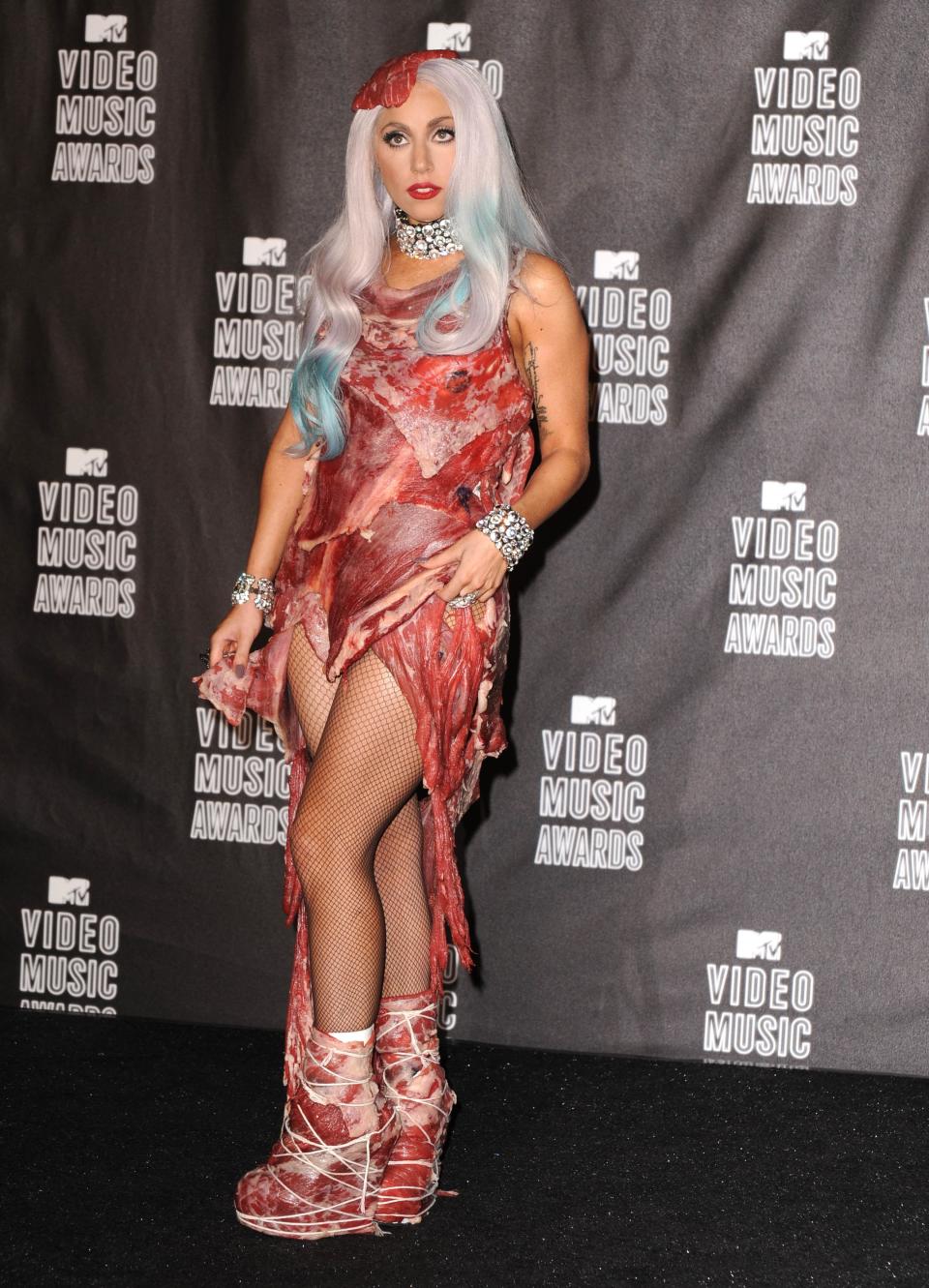
2010 MTV Video Music Awards - Press Room
Steve Granitz/Getty ImagesWe all remember exactly where we were when we watched this iconic VMA moment unfold. Lady Gaga appeared at the 2010 MTV Video Music Awards draped in slabs of meat from head to toe — and the rest was history.
The star caught a significant amount of backlash from PETA, but later explained that the look was intended as a statement against the “Don’t ask, don’t tell” policy that prevented openly LGTBQ+ individuals from serving in the U.S. military. In a speech, “The Prime Rib of America,” Lady Gaga said the law prevented the military from enjoying “the greatest cut of meat my country has to offer.”
2010 — The Banning of the Burqa in France
In October 2010, top constitutional authorities in France cleared the last legal process needed to ban the burqa and other Islamic face coverings in public places. Though the burqa (or any other religious garb for that matter) is not a “fashion statement” per se, it is very much a personal statement of a person’s identity and values.
Many felt the banning of the burqa was a major violation of human rights, and women fought back in protest by walking the streets of Paris fully veiled, in full confidence, on the day the law came into force.
2012 — Katy Perry’s Obama-Endorsing Dress
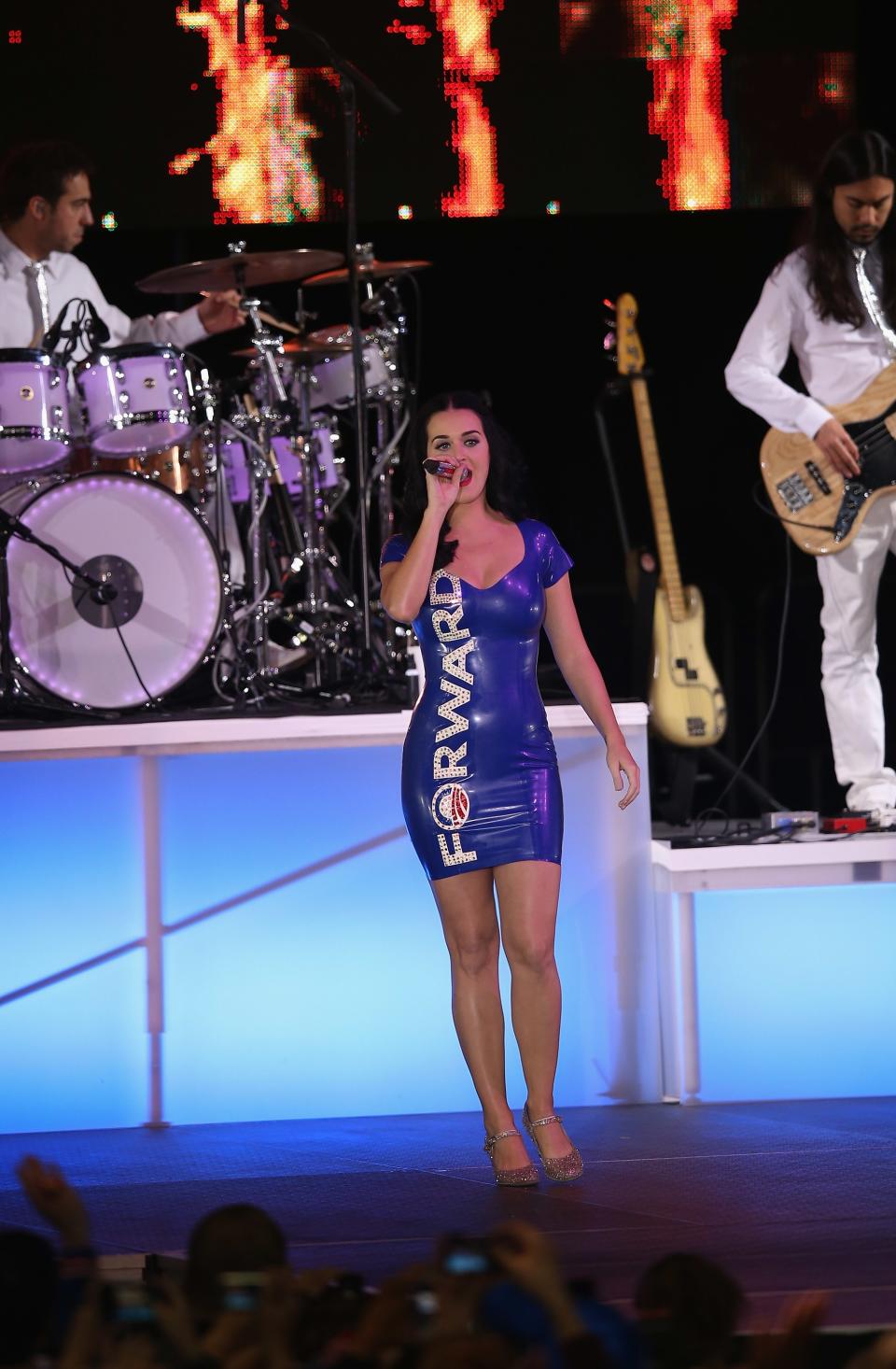
U.S. President Obama Continues His Push Through Key Swing States In Final Days Before Election
Scott Olson/Getty ImagesAfter Obama’s first term, it didn’t come as much of a shock that he sought reelection. Many celebrities from Beyoncé to Madonna showed support and endorsed Obama. Among them was Katy Perry, who dazzled in a latex blue dress with the word “Forward” emblazoned in white letters on the front, echoing Obama’s campaign theme.
The pop star wore the number as she performed for thousands of Democratic supporters during a rally for Obama at the Delta Center in Milwaukee on November 3, 2012. Katy’s fashion choice was an iconic one, as it came at a time when seemingly everyone on the planet was appropriating Obama’s campaign slogan as a fashion choice, bringing in a heightened wave of politicized fashion.
2013 — The MET’s “Punk: Chaos to Couture” Exhibition
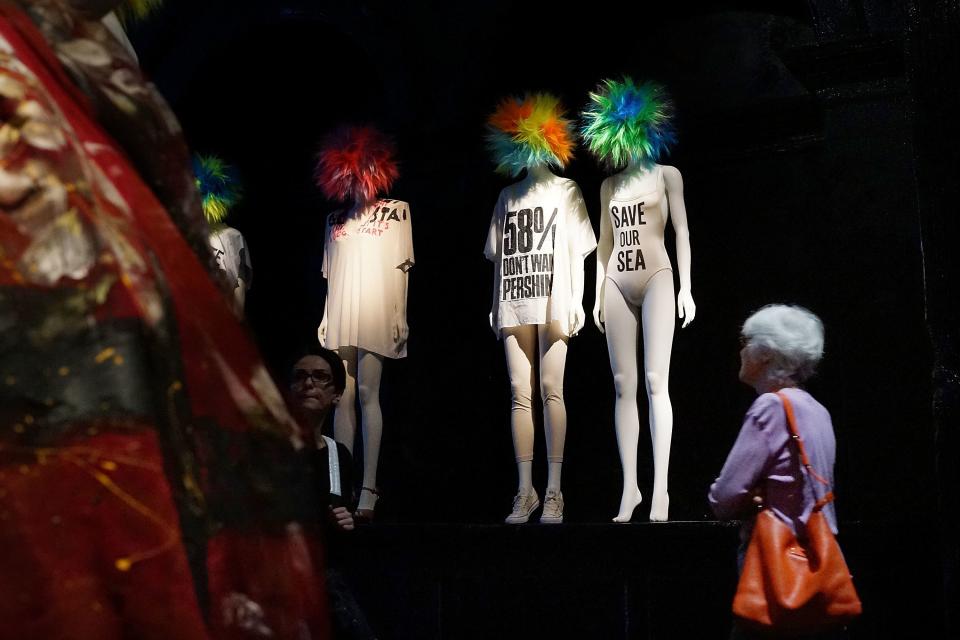
Metropolitan Museum of Art Hosts Exhibit On Punk Fashion
Spencer Platt/Getty ImagesEvery year, the Metropolitan Museum of Art debuts its Costume Institute exhibition, and in 2013, it was exclusively dedicated to examining punk’s impact on high fashion — from the movement’s very birth in the early ’70s up to the present day.
The “Punk: Chaos to Couture” exhibition not only tackled antiestablishment views and individual freedoms as themes, it also raised pressing social issues, such as climate change, by displaying protest fashion items. The exhibition featured, among other pieces, Katharine Hamnett’s “58% Don’t Want Pershing” tee.
2014 — André 3000’s Tour Jumpsuits
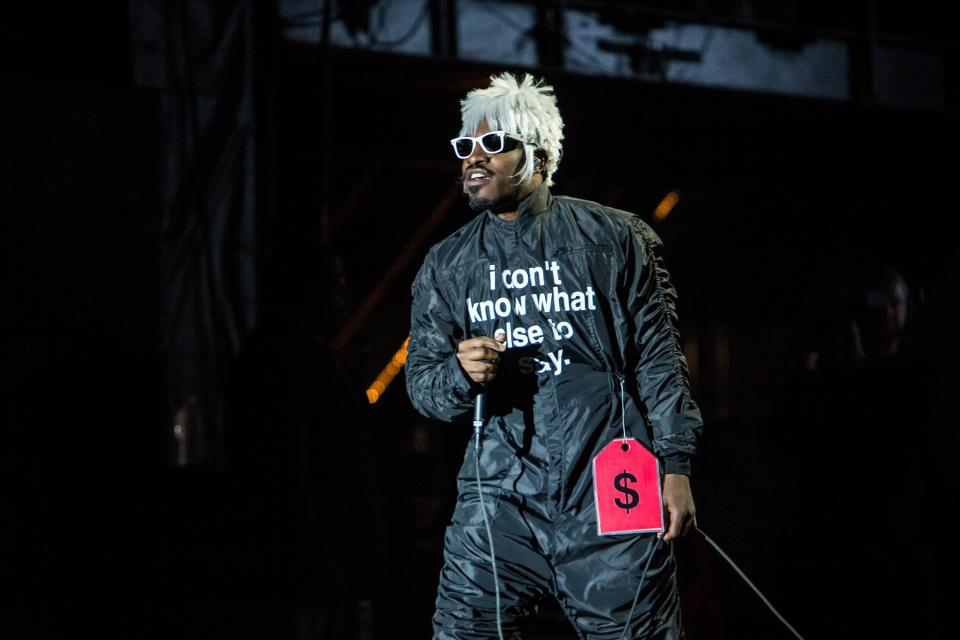
2014 Voodoo Music + Arts Experience - Day 1
Josh Brasted/Getty ImagesNot too long after they shook up the world with the announcement of their reunion tour, Outkast broke the internet while on the road. If you were scrolling through Twitter or Instagram on any given day during the 2014 tour, then you probably saw the viral shot of André 3000 sporting a signature white wig and black jumpsuit with stark white lettering across the front. In fact, he wore 47 jumpsuits throughout the tour, each with a different phrase.
The mini-quotes varied in tone and content from show to show, but a significant number of the jumpsuits promoted a political message, such as, “Across cultures, darker people suffer most. Why?” The ’fits also displayed political satire, with quotes such as, “Okay, hand over the cure and stop playing.” In 2015, the jumpsuits were memorialized as an exhibit at the Savannah College of Art and Design in Big Boi’s hometown.
2014 — NBA Players’ Tribute to Eric Garner
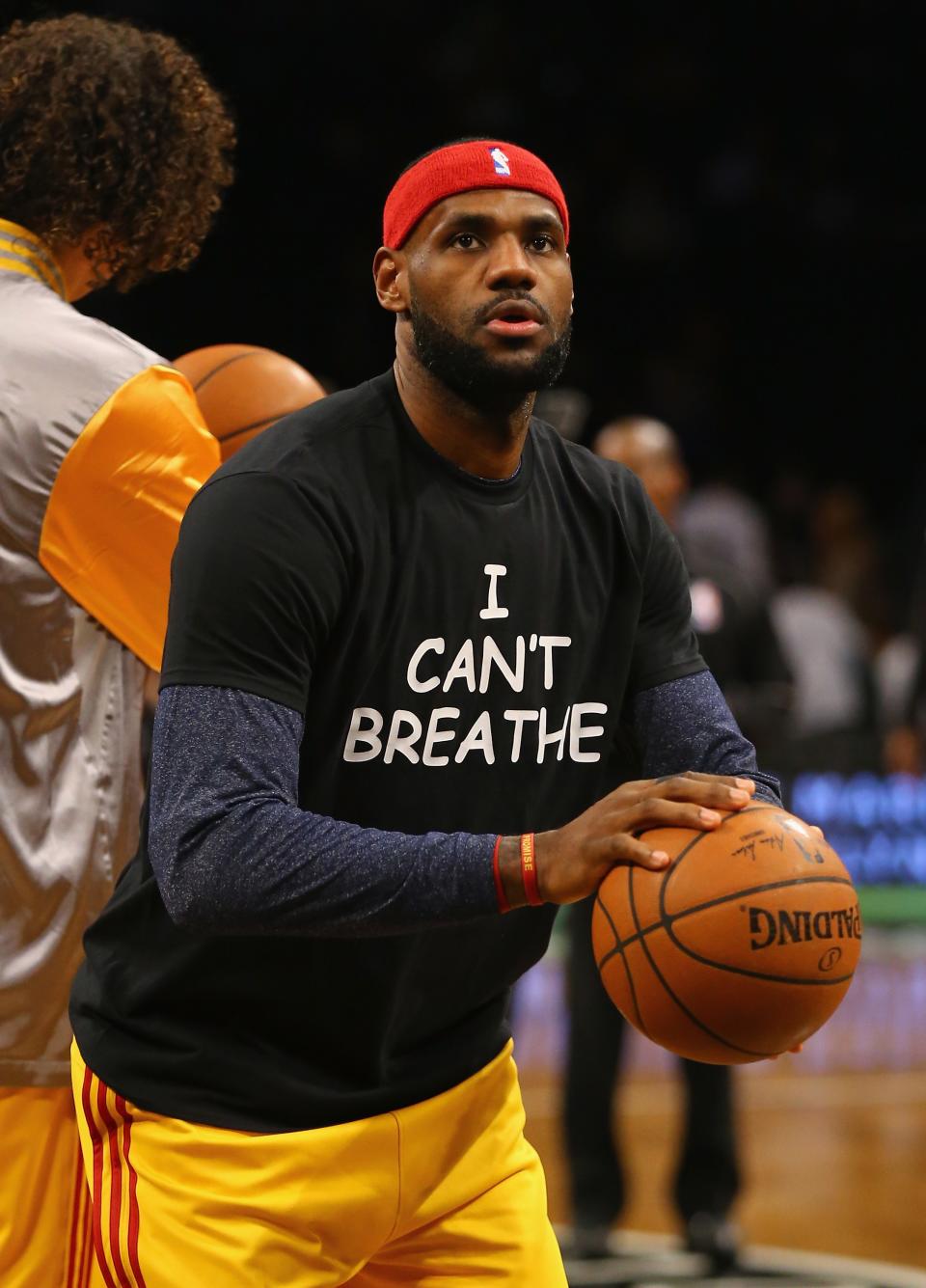
Cleveland Cavaliers v Brooklyn Nets
Al Bello/Getty ImagesThe sports industry has always had a history of intersecting with politics, but nothing quite compares to that moment in 2014 when teams from across the country used their stadium time to honor Eric Garner, an unarmed Staten Island man who died after being restrained in a chokehold by a police officer while saying, “I can’t breathe.” Days after then Chicago Bulls guard Derrick Rose sported an “I Can’t Breathe” T-shirt during a warm-up, several players on both the Cleveland Cavaliers and Brooklyn Nets, including LeBron James, Kyrie Irving, Kevin Garnett, Deron Williams, Jarrett Jack, and Alan Anderson, wore one during pregame warm-ups on December 8 at the Barclays Center in Brooklyn.
Outside the stadium, over 200 protesters lined up chanting “I Can't Breathe!” and “No justice! No peace! No racist police!” NBA commissioner, Adam Silver, said he respected the players for “voicing their personal views on important issues,” but encouraged players to “abide by our on-court attire rules” and wear their sponsored Adidas gear. But players such as Kevin Garnett stood firm. “You hear the slogan ‘NBA cares” and it’s more evident than now to show some support...Obviously we’re not on the front line of this movement, but I think it’s important being from these communities and supporting these communities,” Garnett said.
2015 — Blac Chyna and Amber Rose at the VMAs
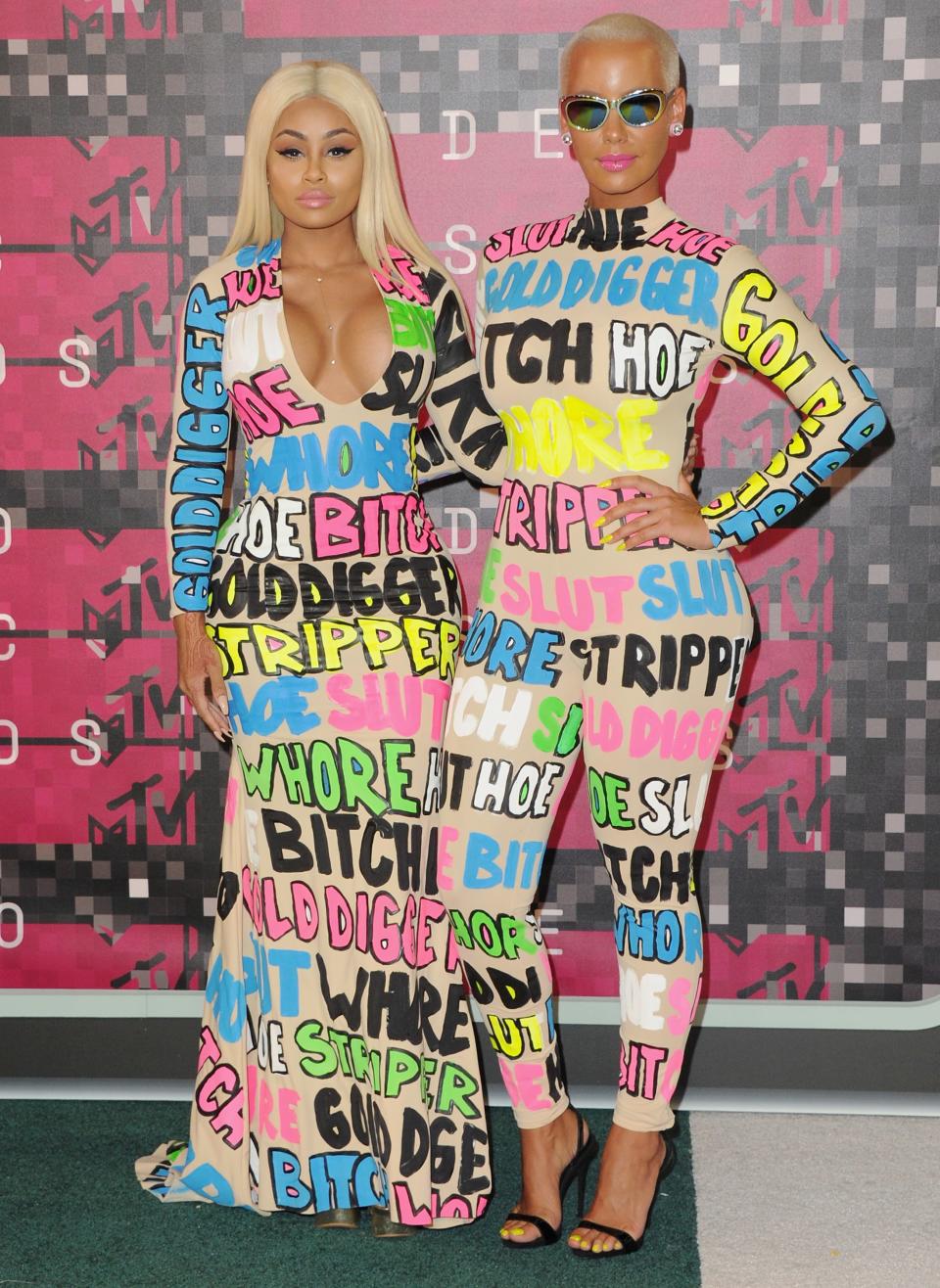
2015 MTV Video Music Awards - Arrivals
Jon Kopaloff/Getty ImagesThroughout its history, the VMAs have provided us with iconic pop culture moments. Blac Chyna and Amber Rose contributed a major moment to the history books when the pair walked the carpet wearing a custom dress and jumpsuit, respectively, sprinkled with slut-shaming slurs.
The powerful outfits were donned to counteract the toxic narrative that women cannot be sexually expressive without being labeled as “sluts and whores.” “They call us sluts and whores all the time, so we just embrace it,” Rose said during the VMAs pre-show. The viral looks were also intended to express support for Rose’s SlutWalk, a transnational movement she joined in support of ending rape culture and shaming survivors of sexual assault.
2015 — Pyer Moss’s “They Have Names” Tee
In January 2015, Kerby Jean-Raymond, founder and creative director of Pyer Moss, featured a legendary collection piece, the “They Have Names” T-shirt. The T-shirt honored unarmed Black boys and men who were killed by law enforcement and symbolized the designer’s stance against police brutality in the wake of Michael Brown’s death and the ensuing Ferguson protests.
After designing the shirt, Jean-Raymond struggled with the idea of selling it for profit, until emails started pouring in from people interested in purchasing it. Ultimately, Jean-Raymond teamed up with the American Civil Liberties Union and decided that all the profits would go toward the organization. These shirts were a prime example of how a medium like high fashion can not only make a statement but make a momentary impact in support of the world of activism.
2016 — “The Future is Female” Tee
The year 2016 witnessed the resurgence of the feminist slogan “The Future is Female” in the form of white crew neck tees with bold back lettering bearing the phrase. The shirts, designed by Otherwild, were inspired by a 1975 photograph taken by Liza Coward of feminist activist Alix Dobkin wearing a shirt printed with the slogan.
Rachel Berks, the brand’s founder, said she designed the shirt for people of all genders to express solidarity with the women’s movement, as well as tangibly help women’s health care by donating a portion of the proceeds from the shirt to Planned Parenthood.
2016 — MAGA Hats
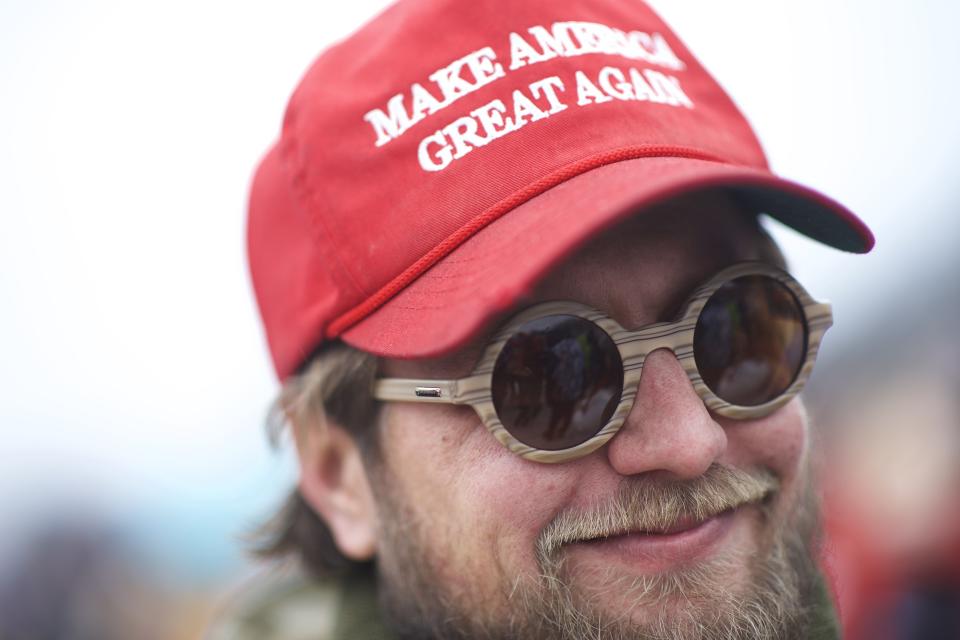
Protesters And Trump Supporters Gather In D.C. For Donald Trump Inauguration
Mark Makela/Getty ImagesIn modern-day America, many feel MAGA hats have become symbols of oppression, intolerance, racism, and isolationism. They became popular during Donald Trump’s 2016 presidential campaign. The acronym stands for “Make America Great Again,” a slogan Trump has frequently repeated, calling for a return to a time when the country and much of its businesses, institutions, and high-level jobs were unapologetically run by rich white men.
The slogan, which has pervaded Trump rallies across the country, has caused division between millions of Americans, and its accompanying fashion accessories are no different.
2016 — Beyoncé’s Super Bowl Performance
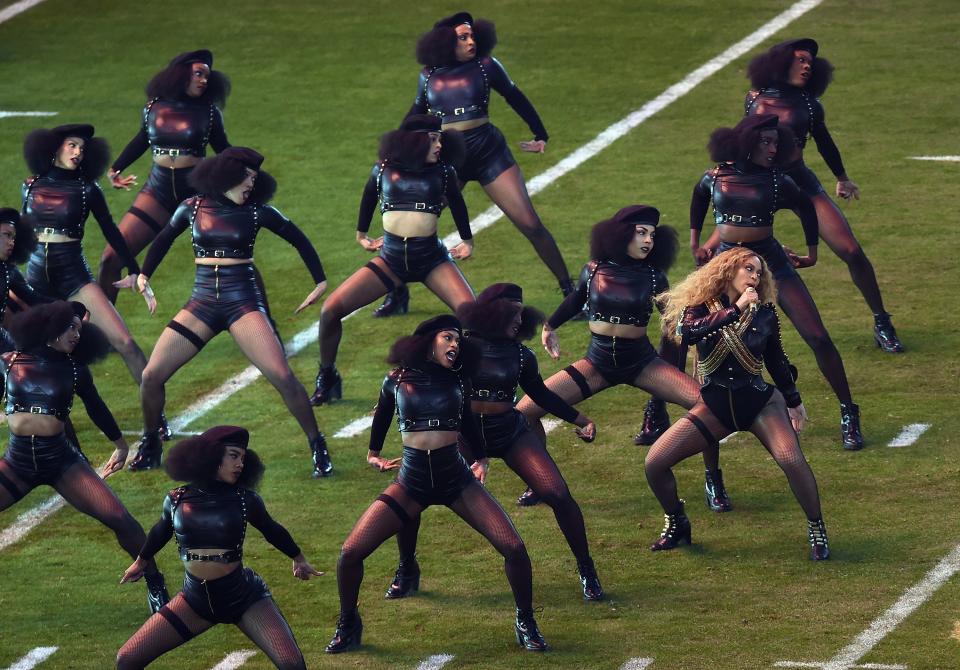
Pepsi Super Bowl 50 Halftime Show
Thearon W. Henderson/Getty ImagesBeyoncé’s 2016 Super Bowl halftime show may have been the most iconic performance in the history of the program. Beyoncé and her backup dancers entered the stadium clad in black leather and berets, paying tribute to the Black Panther Party of the ’60s.
The combination of Beyoncé’s pro-Black lyrics and her visual homage to the Black Panthers and their strength and resilience was a boundary-breaking moment for prime time television. The image sent a message to millions of Americans across the country that Black voices will not be stifled or silenced, especially at a time when incidents of police brutality were starting to be exposed more frequently online.
2017 — The Pussyhats
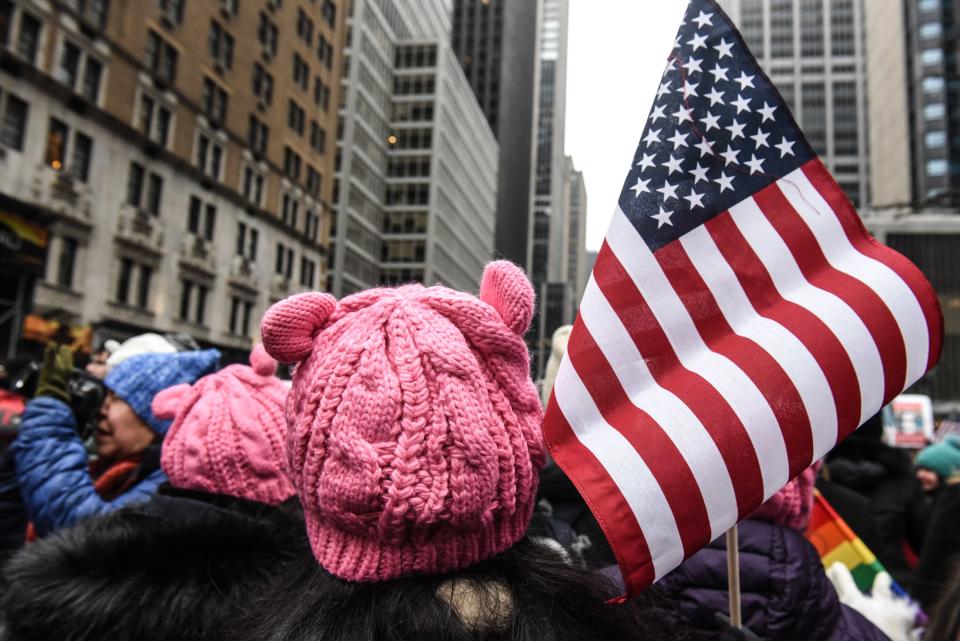
Annual Women's March Takes Place In Cities And Towns Across The Country
Stephanie Keith/Getty ImagesIn 2016, Krista Suh and Jayna Zweiman founded the Pussyhat Project, launching a major feminist symbol that ultimately became visually synonymous with the 2017 Women’s March that coincided with the first day of President Trump’s term. The little accessory now known as “The Pussyhat” took on a life of its own, with women all over the globe wearing them in solidarity.
In an interview with Teen Vogue, Zweiman stated that “the Pussyhat Project has two parts: 1. Creating a sea of pink hats at the Women’s March to make a bold and powerful statement of solidarity, and 2. Giving people who will not be able to march — whether for medical, financial, scheduling reasons — visibility, and a way to support the marchers and women’s rights.”
2018 — Serena Williams’s Black Catsuit
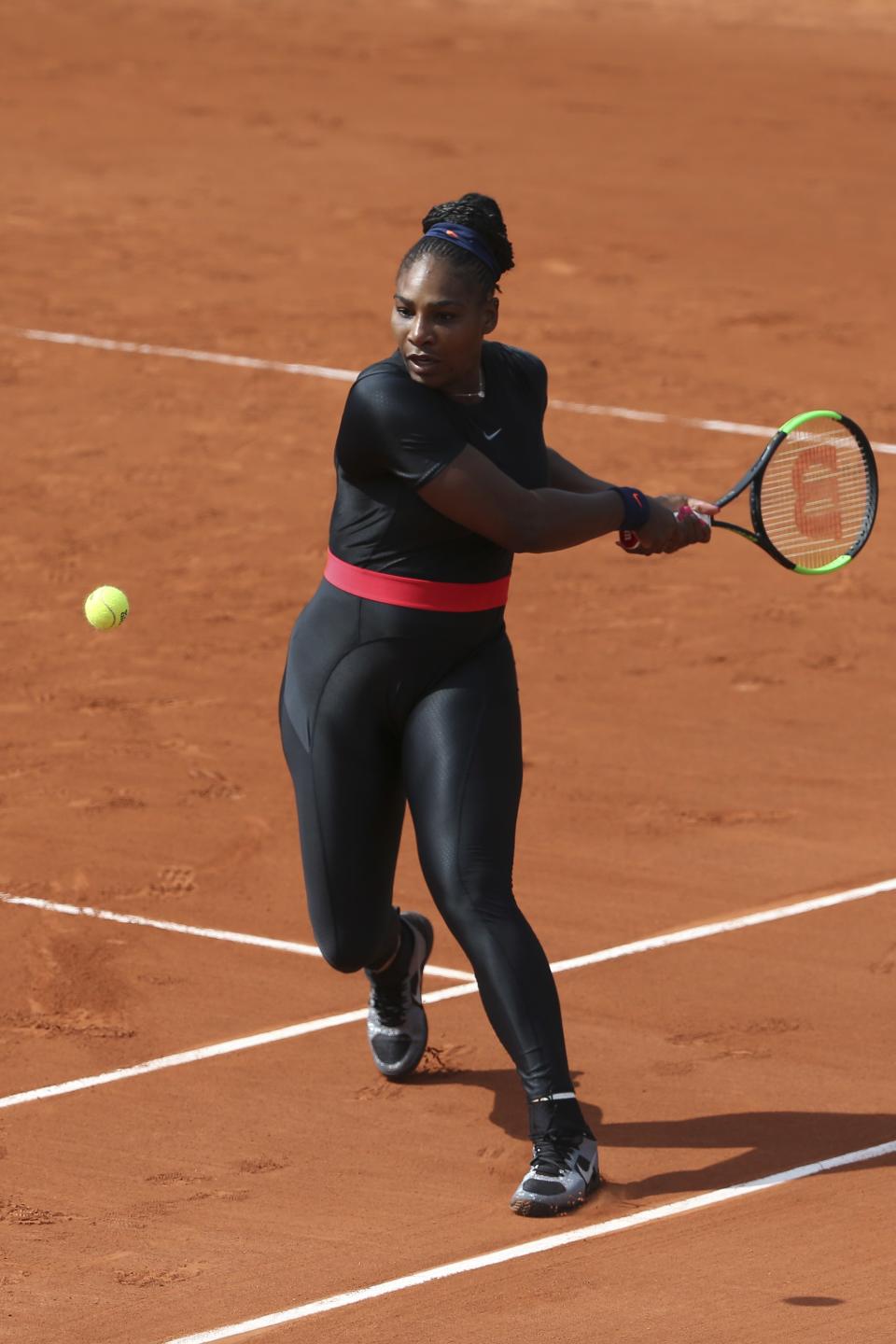
2018 French Open - Day Eight
Jean Catuffe/Getty ImagesIn 2018, Serena Williams’s black catsuit at the French Open made headlines worldwide. The outfit choice drew rebuke from the French Tennis Federation president, Bernard Giudicelli, who suggested that the bodysuit was disrespectful to the sport of tennis and said the tournament would introduce a dress code to regulate players’ uniforms.
Giudicelli’s response helped identify a major strain of elitism within the sport. That fact that Williams took a stand and continued to make bold fashion choices at the French Open gained viral attention and support from major brands like Nike.
2018 — #MeToo at the Golden Globes
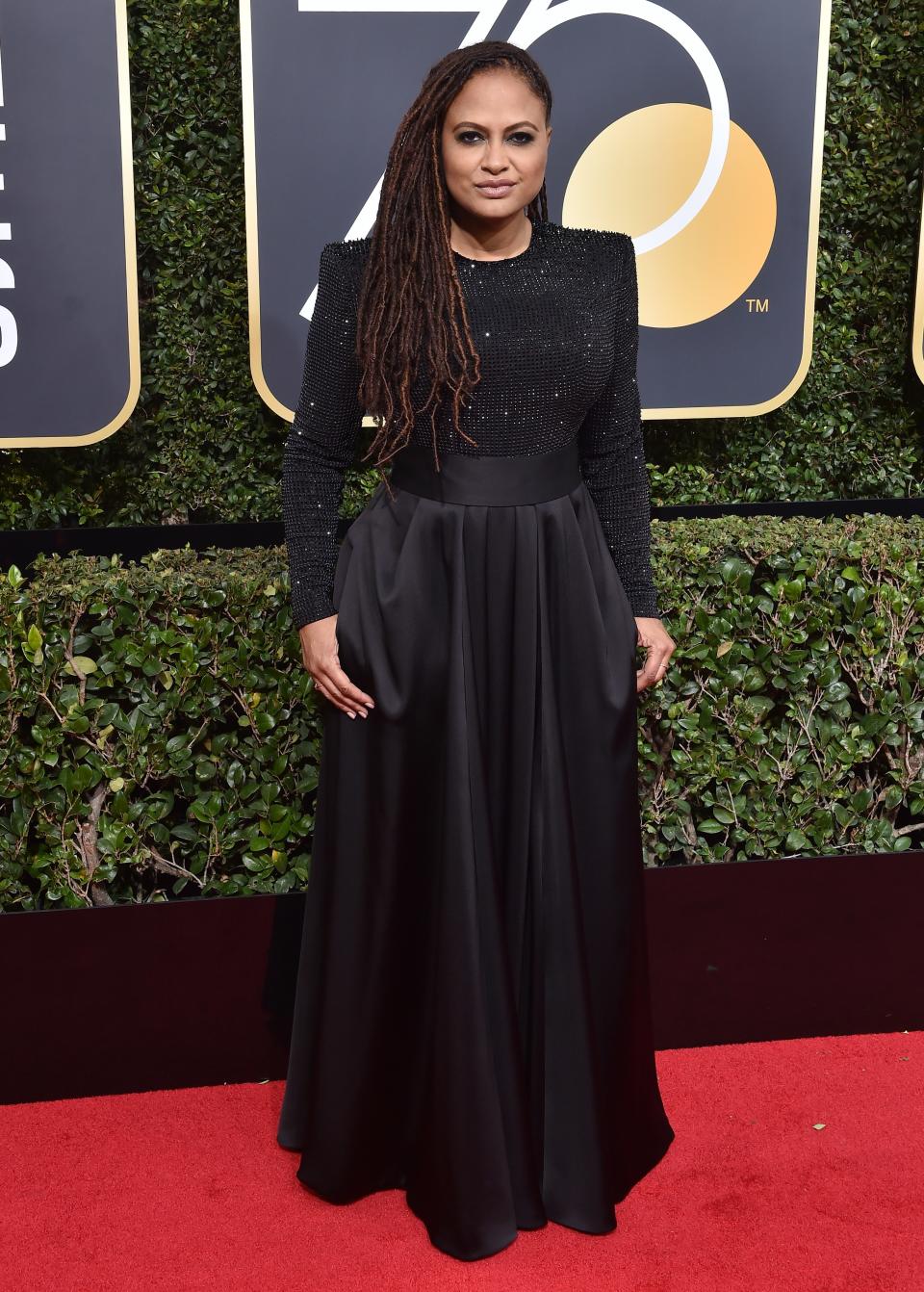
75th Annual Golden Globe Awards - Arrivals
Axelle/Bauer-Griffin/Getty ImagesWhen the Harvey Weinstein scandal came to light in late 2017, it exposed the dangers of exploitative and manipulative misogyny that had been ingrained in Hollywood for so long. Thus arose the #MeToo Movement, which advocated for women’s voices to be heard over the shouts of powerful men.
To show their support for the #MeToo Movement, many of the stars who attended the 2018 Golden Globes wore all black on the red carpet. From Issa Rae to Aziz Ansari, Reece Witherspoon, Viola Davis, Oprah, and Ava DuVernay, the actors took a stand against institutional oppression by reminding viewers that they support all women, and not just those who are wealthy and white.
“I am wearing black today because balance and inclusion and diversity is not some kind of allowance to be made to accommodate people. No, sir. It is a correction of an error. It is a righting of a wrong. And it is going to be done. Now,” DuVernay tweeted of the fashion choice.
2018 — Melania Trump’s “I Really Don’t Care. Do U?” Jacket
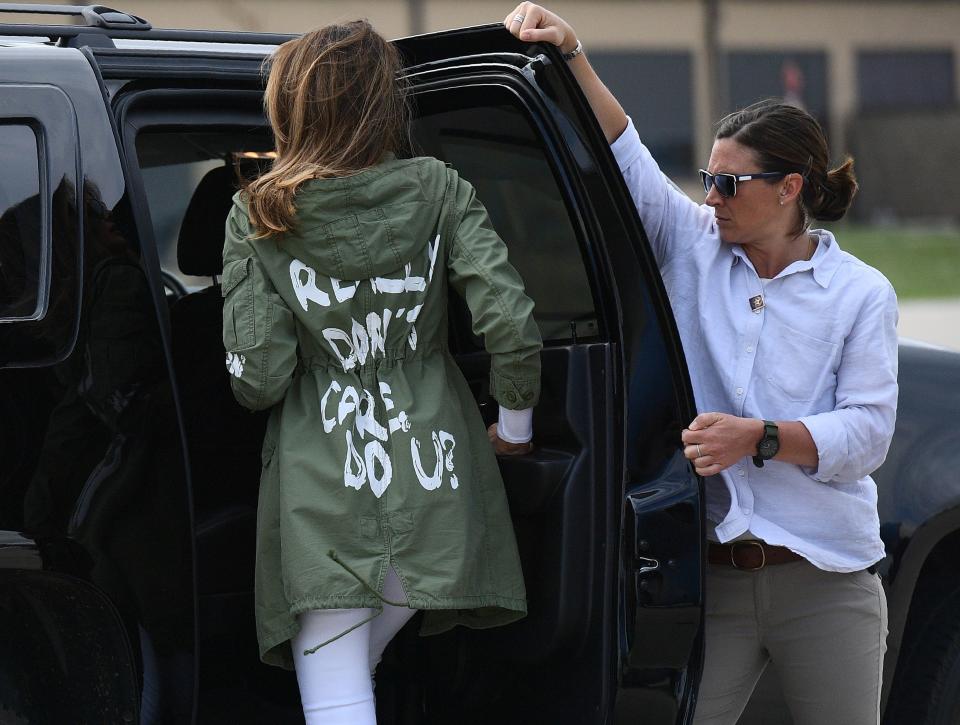
US-POLITICS-IMMIGRATION-MIGRANTS-MELANIA-JACKET
MANDEL NGAN/Getty ImagesThe crisis at the border has long been an urgent human rights concern, but in more recent years, the dangers have become even more acute. This past May, a 16-year-old boy died in an overcrowded Border Patrol station after he was reportedly neglected by Border Patrol agents and health care workers after becoming seriously ill, according an investigation by ProPublica. Incidents of abuse and neglect like this are all too frequent and are unfortunately a reflection of our current administration.
Last year, first lady Melania Trump visited migrant children on the U.S.-Mexico border, sporting a $39 jacket that read, “I Really Don’t Care. Do U?” Though Trump changed her story at least once as to whether there was an underlying message of the jacket, it’s hard to image that the fashion choices of someone in her position — with a team of advisors, stylists, and a PR machine behind her — are not meticulously calculated. The jacket sent shockwaves through the American public and served as just another visual reminder of the current administration’s misdoings.
2019 — Billy Porter’s Oscars Tuxedo Gown
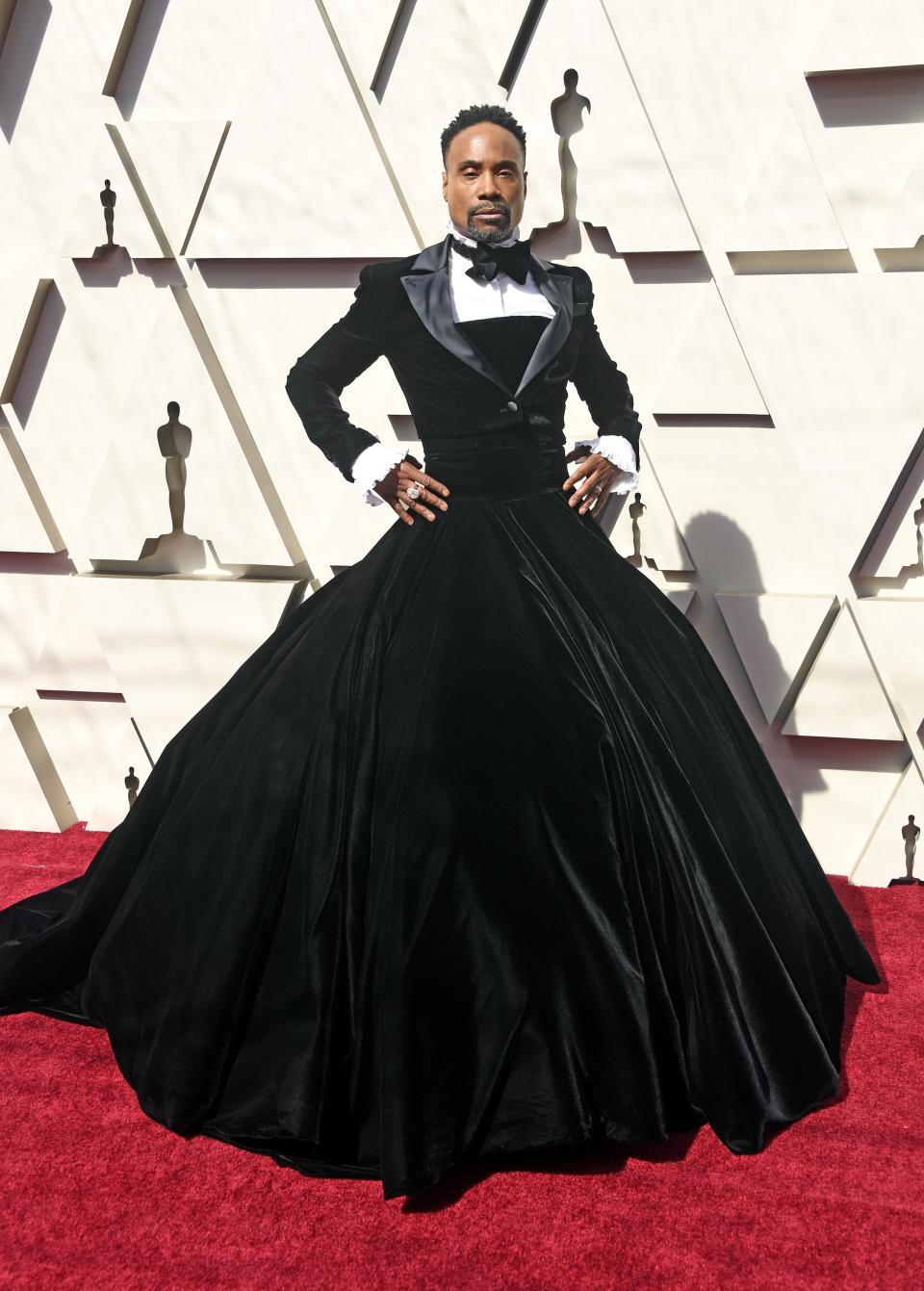
91st Annual Academy Awards - Arrivals
Frazer Harrison/Getty ImagesTo round out the decade, we can’t go further without mentioning the iconic tuxedo dress that Billy Porter wore on the 2019 Oscars red carpet. For many, the tux-gown combination represented something much deeper than a creative fashion choice. Indeed, Porter told Vogue that his goal was “to be a walking piece of political art.”
“What is masculinity? What does that mean? Women show up every day in pants, but the minute a man wears a dress, the seas part,” he added. “This industry masquerades itself as inclusive, but actors are afraid to play, because if they show up as something outside of the status quo, they might be received as feminine, and, as a result, they won’t get that masculine job, that superhero job. And that’s the truth. I’ve been confronted with that.”
2019 — The House Democratic Women’s Working Group Wearing White
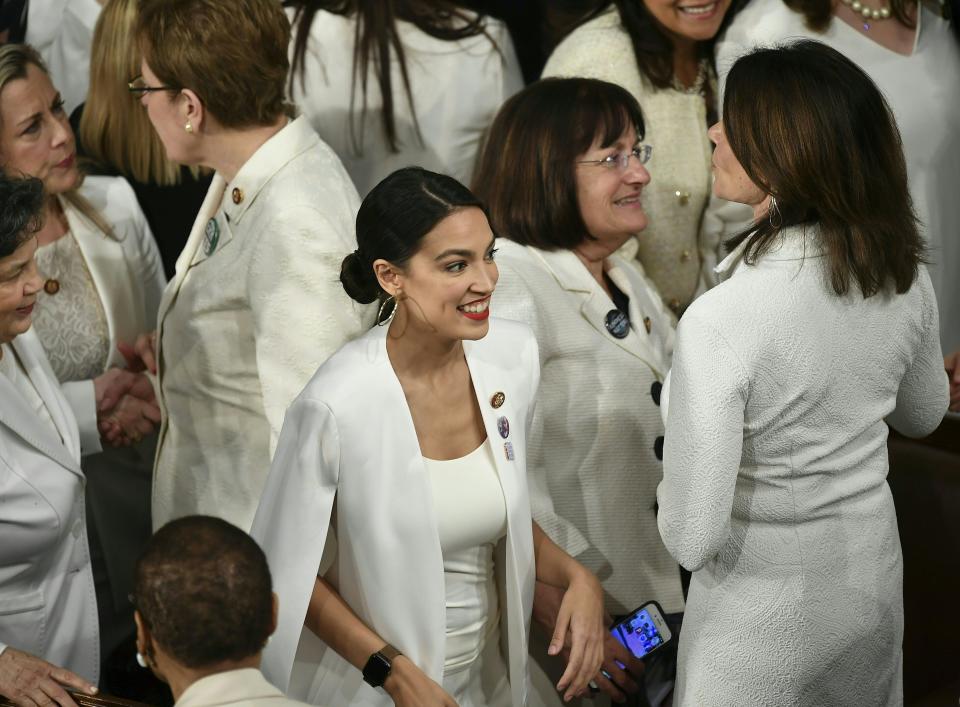
US-POLITICS-TRUMP-SOTU
MANDEL NGAN/Getty ImagesThe House Democratic Women’s Working Group wearing all white was perhaps the most literal iteration of fashion’s intersection with politics this decade. During the 2019 State of the Union address, the Democratic congresswomen wore white to pay homage to the early 20th-century suffragette movement and highlight the progress the women’s rights movement has made thus far.
As Congresswoman Rashida Tlaib stated, “We wanted to show all the young girls across the country, all the young women that the women’s rights movement hasn’t stopped, it’s continued and it’s now in the United States Congress. We’re here. A lot of us have been out and about fighting for equal pay, fighting for medicare — for all those things that I think are important to women. Now we’re actually at a place where women are making those decisions.”
2019 — Stormzy’s Glastonbury Vest
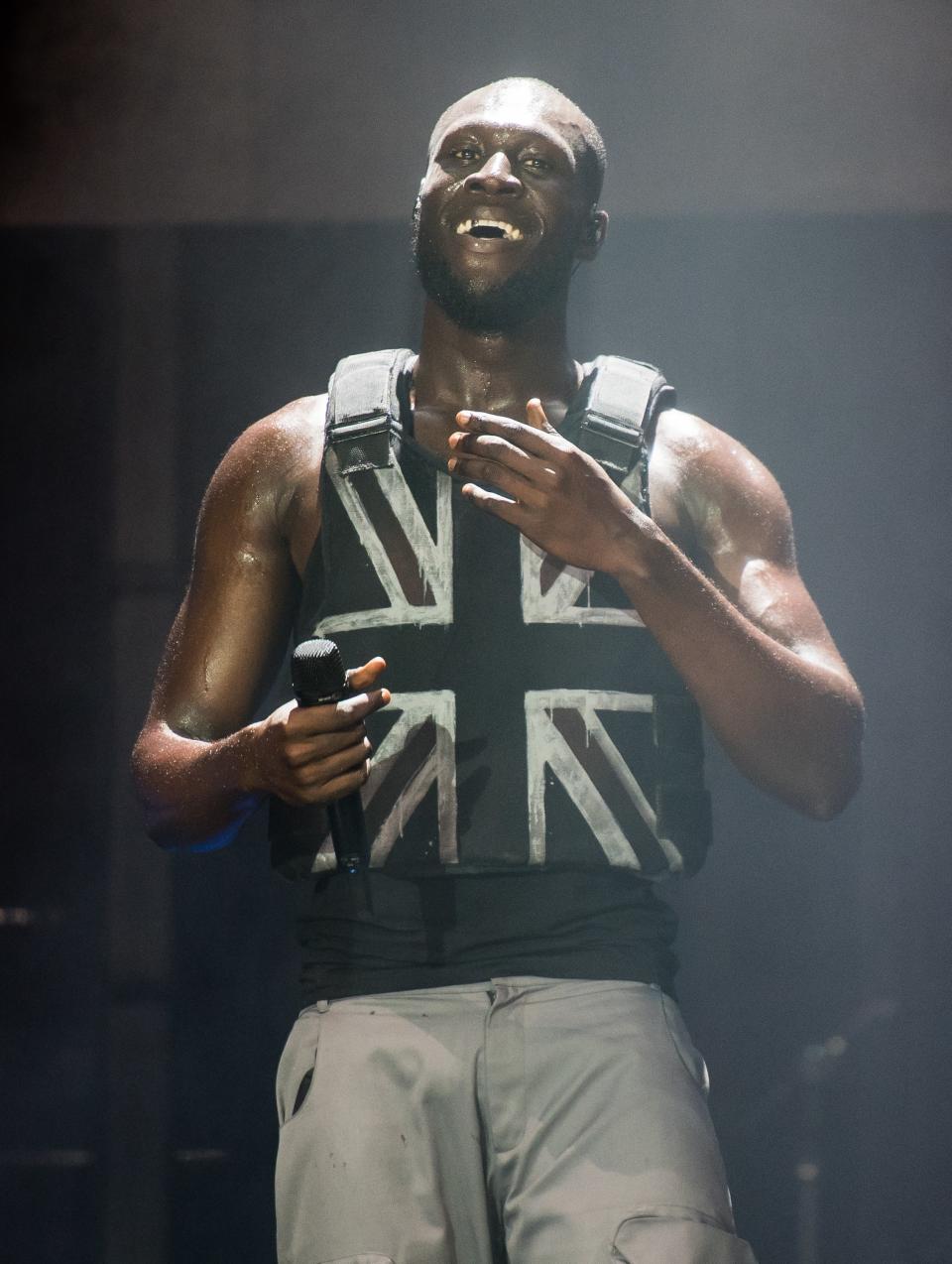
Glastonbury Festival 2019 - Day Five
Samir Hussein/Getty ImagesBritain’s knife crisis has claimed the lives of far too many. As the violence has persisted over the years, the media has been criticized for its sensationalist and inconsistent coverage of the deaths, and often failing to focus on some those who lost their lives as individuals who left families behind.
This is why Stormzy’s 2019 Glastonbury set was so important. The artist sported a custom Banksy stab-proof vest as a comment on Britain’s knife crisis, racial inequality, and criminal justice system. During the set, Stormzy played a clip of a speech by Labour MP David Lammy highlighting the disproportionate criminalization of Black men in the justice system. Stormzy’s vest, combined with his set, stood tall as a physical manifestation of what the future of England could look like and sent the message that Black lives matter, at one of the biggest cultural events in the world.
Let us slide into your DMs. Sign up for the Teen Vogue daily email.
Want more from Teen Vogue? Check this out: 16 of the Most Inclusive Fashion and Beauty Moments of the Decade
Originally Appeared on Teen Vogue

